DSLR video IS a revolution
Last month, the uncompromising Robin Schmidt denounced that DSLR cinematography is a revolution. Read his excellent article right here on The Convergence. This is a response to that article. As usual, Robin was right in several points:
- DSLRs didn’t change the art of filmmaking.
- DSLRs are more of a renaissance as they are a ‘rebirth of a creative free-spiritedness that characterised the US indie movement of Spielberg, Bogdanovich and Scorsese’.
- The unique community is one of the best things of the DSLR movement.
As mentioned in another recent blog post of his, he talks a lot of bollocks – as do I, by the way (so please don’t take any of us too seriously, I’m sure Robin agrees).
While I’m in line with every of his points mentioned above, I tend to disagree with his principal notion of denying the revolutionary impact of DSLRs in the filmmaking world. Ironically, I get the feeling he found himself confirming the very fact that these little cameras are nothing short of a revolution while he wrote his own article 🙂
Let me show you why:
1. DSLRs haven’t changed the art of filmmaking – Yet.
But how could they? They’ve been around for only a VERY short while (I think we haven’t even had the 5Dmk2 firmware that allows manual operation in video mode for two years now). And up until now, we have been very busy with working around all the drawbacks of these cameras. They are numerous and every filmmaker who has ever used DSLRs is well aware of at least some of them.
In short: Nobody had the time of changing the art of filmmaking with them yet. Or maybe they already did, and we didn’t notice that much. I don’t mean the jittery footage from non-stabilized lenses we have gotten so used to since we saw the first handheld videos from DSLRs on Vimeo. I’m talking about everyday practice in very professional environments, advantages mostly attributed to the small form factor of these cameras.
Let me give you examples:
Greg Yaitanes, the director of the most successful TV show in the world, HOUSE, and his DP Gale Tattersall decided to use 5Dmk2’s and Canon lenses to shoot an entire episode on them. Why, you ask? Not because they were cheaper than film. They don’t care! Simply because the tiny size of the equipment allowed them to shoot in very confined spaces of a collapsed building, which was the main set for that particular episode. There was simply no way to shoot in that space with 35mm film cameras. Well, you might add, they could have changed the building in order to make it work. But the episode certainly wouldn’t have become as convincing as it turned out. So in this case we can’t say for sure if the art of cinematography was changed, but it possibly has – the average Joe or even we as professionals didn’t notice because the story was convincing enough not to be bothered by camera work. But we will never know because we haven’t seen an alternative shot on other cameras or technology.
I was Philip Bloom’s assistant along with Sebastian Wiegärtner during the reshoots for the upcoming Lucasfilm feature film “RED TAILS” last May in Prague. Producer Rick McCallum, a camera gear enthusiast and really great guy to be around, became aware of Philip’s work on the Internet and asked him to come aboard and head an additional, dedicated DSLR camera team. So apart from the two main cameras, Philip was able to pick additional angles with a Canon DSLR, pimped out to suit the needs of such a production. It was great fun and I’m looking forward to the film – last time I heard about it, Philip wrote that a lot of his shots seemingly found their way into the final cut. We will see. Anyway, think about it: This is a big-budget Hollywood blockbuster. Their is absolutely no financial need to shoot on DSLRs. They did it anyway – because the image fitted in neatly with the existing Sony F35’s used for this movie. I would certainly call that a revolutionary move on Lucasfilm’s part. Check out Philip’s much more detailed coverage on Red Tails right on his blog.
Another example is their incredible light sensitivity. Check out the guerilla documentary “Undercity” shot on a 5Dmk2 in the New York Subway system if you haven’t seen it yet. According to the DP Andrew Wonder, this would simply not have been possible to do with anything other than a DSLR.
So I guess DSLRs are already massively changing the art of filmmaking – it just seems like we aren’t noticing as much when the films and shows draw you right in (that is, when the story is more than just a nice bunch of visuals). Also, we desperately need to look beyond the relatively small scope of us DSLR bloggers – there are a lot of very successful directors and DPs out there using them everyday on very big productions without ever bragging on the Internet about it 😉
2. & 3. ‘Rebirth of free-spiritedness’ & the incredible community around DSLRs
The DSLR movement and the unique cinematic qualities of these cameras combined with their unrivalled low price point has motivated legions of wannabe filmmakers to finally follow their dream. People connect online, try to become better, go gear-crazy in order to maximise the potential of these cameras.
When I started out shooting, MiniDV was still new. A similar community – albeit no way as motivated or large as the DSLR community – poured over the new possibilities and made “movies” with these cameras. Heck, the final large piece I shot on MiniDV with my trusted DVX100 was a one-hour documentary that ended up being screened at film festivals from England to São Paulo, aired on TV channels from Canada all the way to Hong Kong.
Back then, you had hordes of people who thought of themselves as the ultimate filmmakers. They had the ultimate idea for the ultimately perfect film, they just couldn’t do it, because their gear wasn’t right. Or so they said.
Now you have even larger hordes of gear nerds who say the exact same thing about DSLR stuff: they need to have this or that additional piece of gear which would finally allow them to shoot their perfect masterpiece (without much practice, I might add – they rather waste too much of their time on online forums, bitching about the latest no-budget visual masterpiece somebody more productive has just churned out).
Anyway, then there are the others – the ones I talk to on Twitter and Facebook every day – the ones who work in the field, the ones who share their knowledge, the ones who don’t care about the status quo, the ones who are not afraid that cheap technology and easy access to it can threaten their livelihoods.
And then there is the ever-growing group of shooters who didn’t do any shooting before DSLRs came out. Neither Robin Schmidt nor I or most other DSLR bloggers are part of that group. But that’s exactly the group that makes the DSLR video movement nothing short of a revolution.
Simply because it’s all about access. Never before in the history of filmmaking was it possible to achieve film-like results with such cheap pieces of kit. Even professional shooters in the broadcast field had to learn anew as DSLRs are fundamentally different from what these shooters have been used to for years.
The consequences of this accessibility are what really makes the difference between evolution and revolution. I find it revolutionary when people without formal film education get access to these tools, destroying the old hierarchies of the industry that have existed mainly due to technical barriers for far too long. It was only natural that outsiders would really spark this revolution. People who where not brought up using film stock, but always strived to achieve something that looks just like it. People like Philip Bloom, who has come a looong way since he quit as a broadcast cameraman at Sky and really spearheads the DSLR revolution.
Then you get “amateurs” who show a remarkable talent and were once confined to affordable mediums like 8mm film, VHS and MiniDV. There was no way they could ever reach the aesthetic quality of the 35mm films who were made by people who weren’t always more talented than they were. DSLRs really change all that. (Heck, the most-watched TV series on earth shot an entire episode on a stills camera!! Just think about it and it becomes clear that the boundaries are blurring rapidly.)
Now you have lots of talented amateurs who manage to pull of visuals that you have been used to from world-renowned cinematographers so far. People like Gunther Machu from Vienna, a hobbyist filmmaker who travels the world for business and makes little video on the side – and who is now getting offers from international broadcast companies to screen his stuff. There are so many others I don’t even know where to start – just follow the most “liked” videos on Vimeo and within weeks, you will see what I mean.
So DSLR video is a revolution for many. It opens doors. It gives you results that you thought would cost a fortune to create only 5 years ago.
What’s your excuse not to make that masterpiece you’ve ever dreamt of – right now?
-
It is definitely the “film access revolution ” previous to dslrs I was using a let’s which was bulky and used more lighting…. the dslrs allow us to get more shots in on a shoot and be more productive because we can get away with using less lighting (vs a letus). Having better glass can help too. People now can buy an 800 dollar t2i and begin getting hands on real life experience in shooting some beautiful images. If they have some natural talent and a little effort they can get seen have millions of people enjoy their work. Before the access revolution they would have had to work as a pa and taken years to work to a DP. THE DSLR revolution make have created a bridge or shortcut for people to rise as film makers in a completely new way. Good article Nino 🙂
-
well for me ( personally ) its really (almost) one think that is “the revolution” about that DLSR thing … its the Community around that cam … all the ppl i’ve met (online …mostly via twitter & vimeo) involved in DSLR & Shooting stuff with it … i probably wouldn’t have met if i still were shooting & editing stuff “just” with / from a XH-A1 HDV Cam … even the RED ONE did NOT make that happen 😉
-
Great article Nino, for me the movement has 3 important components and only one of these is the humble DSLR. Within the DSLR you also have a subset of aspects which make them important.
– Video sharing sites like Vimeo, this is the biggest component of the revolution
– The DSLR
– Social networkingSo it is mostly an internet revolution, it’s just that the DSLRs have happened to arrive at around the same time as video sharing was going mainstream. What the DSLRs have changed is affordable access to better image quality and creative expression. Before amateur work looked amateur, and now it looks professional and all the lines between who is a pro and who is just starting out are being blurred.
The internet is our distributor as well, prior to the internet that was in the hands of elitist studios!
So a hell of a lot has changed to make this revolution possible, and long may it continue!! It really is to the benefit of us all, and to creativity in general.
-
Only one thing niggles me about the whole revolution. Take
for example the episode of House shot on the 5Dmkii, if it was only
about getting the camera into small spaces and not about price then
DSLRs are not on their own. Anthony Dod Mantle, the DP of Slumdog
Millionaire, used the SI-2k mini-head for it’s compact design,
comparing it to that of a stills camera. -
Hi Nino,
as always a very nice article, and I would fully agree, especially to the community part of it!
Thanks for the mention as well 😉 -
One side note just came to my mind: There is a huge lesson to be learned from the examples in the beginning of your article. The DOP of “House” did not use a DSLR just because he COULD use it or because it was cheaper. No, he did it because there was a special NEED for a specific location and atmosphere in the scenes. The same goes for your experience with Philipp Bloom on the Red Tails set, I assume.
So why is this important? It s not about the fact that all of us can technically be filmmakers (availability of rather cheap gear etc.), but it is about how and why one is using DSLRs. IMHO this is also important for (over)use of bokeh or timlapse, which you can easily do with a DSLR with stunning results – but does it really improove the scene, or are you only using it because you CAN?
I think this is one of the differences between amateurs and pros: Knowing HOW to use gear for specific needs, and not using it just because it is available.
But it is definitely a revolution, and a very fascinating one indeed!
-
While I am excited about potential for brand new film
awesomeness to emerge due to would-be-unknown people being able to
use DSLRs to make their films stand out… I also dread a potential
future of EVERYONE owning one… and thinking they’re pros just
because they own an HD camera. Suddenly actual GOOD films will be
lost in the mix of good-looking videos that are actually the same
kinda crap that the majority of internet video is today. The only
difference is, everything will be in high quality HD.
Bleh. -
http://www.youtube.com/watch?v=KuhhHIdrRJI Sie, i would
appreciate your feedback on this film project. It would be grateful
if you could take out 2 minutes and watch this trailer for my first
movie. Shot on 550d coming in July. Regards! -
Nice article. Although there are some contraints for shooting movies on DSLR’s they still produce a great image and have other percs that cant be found on even proffessional camcorders. Theres still a way to go though. Here’s a short example of some animals I shot on a Nikon.


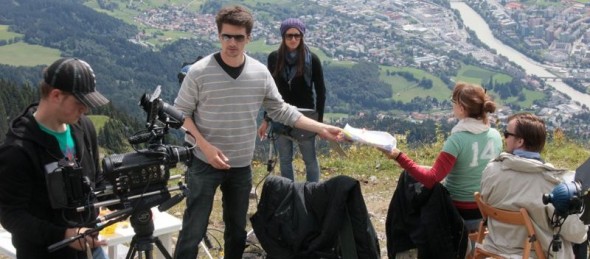


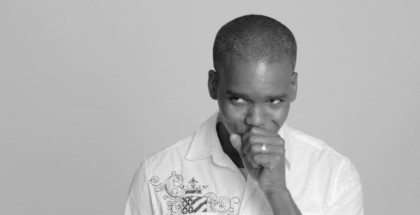

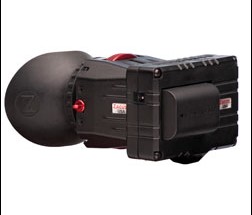

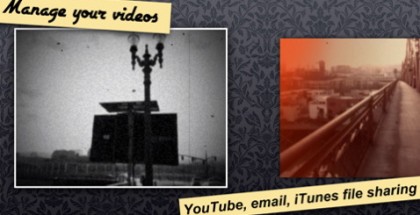
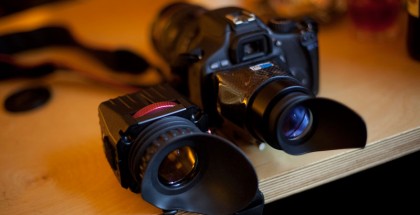
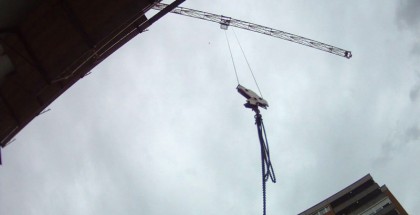
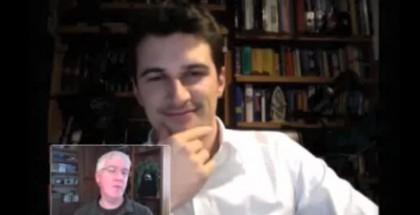












Comments